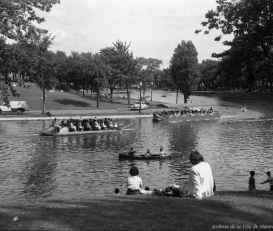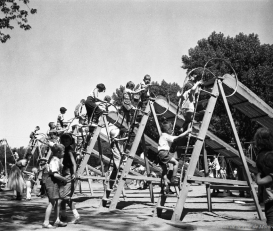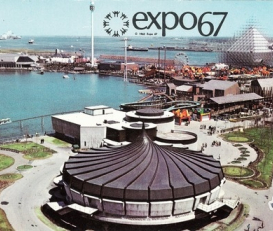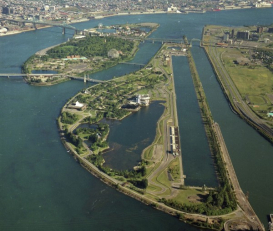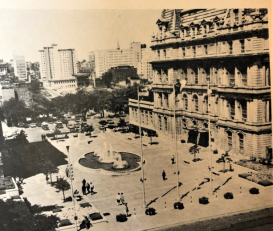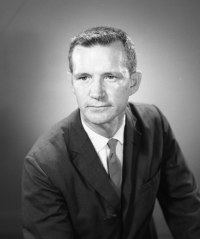
1916-2006
Warner Goshorn arrived in Montréal in 1953, just as the new Montréal Parks Department was entering the period often called its “Golden Age”.
He arrived, wrote historian Jean Laplante, with “many strings to his bow.” He was a man of tenacity and a talented writer, with admirable patience, and an eclectic academic background that gave him the broad perspective he would need. Goshorn would become Chief Landscape Architect, serving the city well for two decades. “We owe him the style of parks, new or renovated, that Montreal experienced between 1955 and 1976,” wrote Laplante.
Young Warner, born an Ohio boy, lost his father in the Great Influenza Epidemic of 1918 when he was two, but like him, he attended military academy in his teen years. By 1938, Warner had his B.A. (Geology), and after a stint as a production analyst, he headed to New York State College of Forestry in 1941, where he met his (second) wife Ruth, also a landscape architect.
In 1947, with his B.S., L.A., Goshorn joined Akron Metro Parks Board (Ohio), where he stayed for seven years, until Montréal Parks director Claude Robillard drew him to Montréal as an Advisor to the Director (1954). In a year, he was the Chief LA (1955).
During the Goshorn years, the City of Montréal Parks department became essentially the largest landscape architectural firm in Canada, with a remarkable esprit de corps. Montreal aimed to become a “ville de verdure”. In the city’s well-loved parks, such as Fontaine Park, recreational opportunities grew exponentially, to include new sports fields, artificially-iced skating rinks and play areas. Iconic destinations were revamped. (Goshorn’s team created an imposing entrance for Fontaine Park; Place Vauquelin become an elegant, harmonious public space that endured for almost 50 years.)
In the 60s, the department figured prominently in countless projects for Expo 67. All, including the gardens for the Alcan Aquarium at La Ronde, were coordinated by Goshorn. In 1968, Goshorn worked with Fellow Douglas Harper to chair the Montreal-based Congress of the International Federation of Landscape Architects, which attracted LAs from 23 countries.
A decade later, as the city prepared for the Summer Olympic Games in 1976, the department created such facilities as the rowing basin on a section of the Expo site.
With the excitement and major works in the city, the profession’s visibility greatly expanded, encouraging the growth of professional societies. Many of Goshorn’s team were founding members of the AAPQ. (Goshorn became Founding President, 1965-67, Member #1.) Several city LAs, including André Lafontaine, Ulric Couture, André Champagne, and Raymond Gascon, went on to be honoured as CSLA Fellows.
In 1991,the CSLA made Goshorn a Lifetime Member.
Resources
Note: The CSLA sincerely thanks Warner Goshorn’s great granddaughter, Gemma, for permission to link to her illustrated biography, written when she was in Grade 4.
Architecture-Concept magazine, mars 1969
Ville de Montreal Archives
Jean de Laplante, Les Parcs de Montreal: Des Origins à Nos Jours. Méridien. 1919.
Images
Images Courtesy Ville de Montréal Archives: 1,2,3,4,5,7,9
1 Warner Stuart Goshorn (lead photo)
2-4 Montréal’s Fontaine Park in the 50s 4-Théâtre de la Verdure. 1957.
7 Fontaine Park, Raymond Gagnon 1965
5 Alcan Aquarium at La Ronde (two options)
6 Olympic Park, Rowing Basin, 1976
7, 8 Place Vauquelin (the redesign, 1960s), by André Champagne and Warner Goshorn, in Architecture-Concept, mars 1969.
